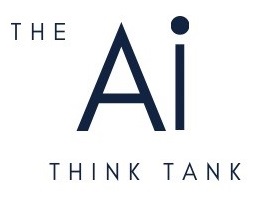Navigating the realm of Artificial Intelligence (AI) often resembles traversing a complex maze for the uninitiated. It’s a domain inundated with industry-specific terminology and buzzwords, often leaving non-technical individuals bewildered.
Within this ever-evolving AI landscape, one term that has surged to prominence in recent years is “Generative AI.”
At our corporate consulting firm, we are committed to demystifying the intricacies of Generative AI, delving into its historical roots, and elucidating the foundational principles that underpin its advancement. Our mission is to make this sophisticated subject accessible to all.
Understanding Generative AI
Generative AI, at its essence, constitutes a subset of AI methodologies designed to fashion novel content, spanning diverse mediums such as images, text, music, and even intricate 3D models. In essence, it’s akin to having an intelligent and creative assistant capable of crafting unique and captivating content with minimal user input.
This remarkable feat is achieved through the application of advanced machine learning models, which possess the capacity to discern patterns and produce fresh content based on their acquired knowledge.
A Glimpse into Generative AI's Evolution
While Generative AI is not a novel concept, its origins trace back to the nascent days of AI research in the 1950s and 1960s. However, it was only in the last decade that Generative AI began making substantial strides, propelled by the surge in computational power and the refinement of machine learning algorithms.
One pivotal milestone in Generative AI’s history is the advent of the Generative Adversarial Network (GAN) in 2014, a groundbreaking creation by Ian Goodfellow and his team. GANs consist of two neural networks, the generator and the discriminator, engaged in a competitive dance. The generator crafts content, while the discriminator scrutinizes it for authenticity. This iterative process persists until the generator generates content indistinguishable from reality. GANs have since been deployed extensively to produce realistic imagery, videos, and various other forms of content.
Key Tenets of Generative AI
1. Machine Learning: Machine learning is the process of training a computer model to discern patterns within data and make predictions based on these patterns. Within Generative AI, machine learning models are harnessed to apprehend the inherent structure of a dataset, facilitating the creation of novel content informed by that structure.
2. Neural Networks: Neural networks, inspired by the human brain, represent a class of machine learning models comprised of interconnected nodes or “neurons.” These nodes collaborate to process input and generate output. Generative AI models frequently employ deep neural networks, which encompass multiple layers of neurons, enabling them to grasp intricate data patterns.
3. GANs (Generative Adversarial Networks): As previously elucidated, GANs epitomize a Generative AI model consisting of two neural networks—the generator and the discriminator—engaging in a competitive interplay to fabricate authentic-looking content.
4. Reinforcement Learning: A category of machine learning where AI agents acquire decision-making proficiency by interacting with an environment and receiving feedback in the form of rewards or penalties. In the realm of Generative AI, reinforcement learning frequently aids AI agents in mastering optimal strategies for content generation.

The Significance of Generative AI
Generative AI stands poised to revolutionize an array of industries, encompassing marketing, entertainment, healthcare, and manufacturing. Here’s how we can harness the potential of Generative AI:
– Enhancing Creativity: Generative AI models can collaborate with human creators, expediting the creative process and catalyzing innovation across products and services.
– Personalization: AI-generated content can be tailored to individual users, providing bespoke experiences in advertising, content recommendations, and customer support, fostering higher satisfaction and loyalty.
– Cost-Efficiency: Generative AI can automate tasks previously reliant on human intervention, such as content creation and data analysis, translating into substantial cost savings and more efficient resource allocation.
– Informed Decision-Making: By generating fresh insights and alternative perspectives, Generative AI aids in making well-informed decisions, resulting in more streamlined and effective business strategies.
– Overcoming Resource Constraints: Generative AI empowers businesses to surmount resource limitations, spawning innovative solutions, designs, or products that may have been unattainable through traditional means.
Illustrating Generative AI's Impact
Let’s examine concrete examples of Generative AI’s potential in action:
– Art and Design: Artists and designers leverage Generative AI tools to conceive unique artwork, fashion designs, and architectural concepts, expediting creativity, simplifying design processes, and pushing boundaries.
– Drug Discovery: Pharmaceutical companies expedite drug discovery through Generative AI, generating new drug candidates and predicting their efficacy, thereby reducing time and costs associated with bringing treatments to market.
– Content Generation: Media firms and marketers employ Generative AI to craft personalized content, including news articles, video game environments, and marketing materials, enhancing user engagement and conversion rates.
– Virtual Assistants: Generative AI contributes to the development of advanced virtual assistants proficient in understanding and responding to natural language queries, generating human-like responses, and engaging users in meaningful conversations.
Conclusion
Generative AI stands as an exhilarating and swiftly advancing field with the potential to reshape industries and redefine the way we work, innovate, and engage.
By grasping the fundamentals of Generative AI, organizations can maintain a competitive edge, harnessing the transformative power of this technology to foster innovation, efficiency, and growth. As Generative AI continues its evolution, staying attuned to the latest developments and cultivating an adaptive and innovative approach is paramount.
The future of Generative AI is radiant, and those who embrace it will undoubtedly reap the rewards it promises. At our corporate consulting company, we stand ready to guide you on this transformative journey.

